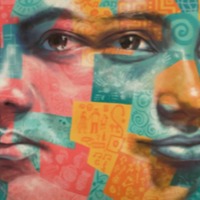
Yasmiin
There is an estimated 48,000 people living in modern slavery in Libya (GSI 2018). Libya is a major transit destination for migrants and refugees hoping to reach Europe by sea. Human trafficking networks have prospered amid lawlessness, created by the warring militias that have been fighting for control of territories since the toppling of Muammar Gaddafi in 2011. Highly organized trafficking and migrants smuggling networks that reach into Libya from Niger, Nigeria, Chad, Eritrea, Ethiopia, Somalia, Sudan, and other sub-Saharan states subject migrants to forced labor and forced prostitution through fraudulent recruitment, confiscation of identity and travel documents, withholding or non-payment of wages, debt bondage, and verbal, physical, and sexual abuse. In some cases, migrants reportedly pay smuggling fees to reach Tripoli, but once they cross the Libyan border they are sometimes abandoned in southern cities or the desert where they are susceptible to severe forms of abuse and human trafficking. Yasmiin had a small restaurant in her home town in Somalia. One day she was kidnapped by some men and raped. After that she became ostracised in her community, people stopped talking to her and stopped coming to her restaurant. She could not stay there any longer and decided to leave Somalia, taking the smuggler route through Yemen and Sudan to Libya, hoping to reach Europe. She was imprisoned in Libya and eventually evacuated by UNHCR to Niger where she is waiting for re-settlement.
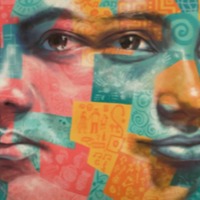
Anneke Lucas
There are an estimated 23,000 people in modern slavery in Belgium (GSI 2018). People are subjected to sex and labour trafficking in the country, with foreign-born people coming primarily from Asia, Eastern Europe, North and Sub-Saharan Africa. Labour traffickers exploit men in restaurants, bars, sweatshops, horticulture, fruit farms, construction, cleaning businesses and retail shops, they also exploit foreign workers in domestic servitude. Sex trafficker exploit Belgian girls, some of whom recruited by local pimps, and foreign children, including Roma. Forced begging within the Romani community in Belgium also occurs, while asylum seekers often have their applications for legal status denied, increasing their vulnerability to trafficking. Anneke was sold by her mother as a child sex slave to a paedophile network. Anneke was raped daily by older men, many of them prominent Belgian politicians, until she was eleven years old. At eleven, when she was considered no longer useful to the network, she was tortured to be killed. She was saved from death by a man negotiating with the politician in charge of the network. Anneke talks about her experience of therapy to work through her experiences of trauma.
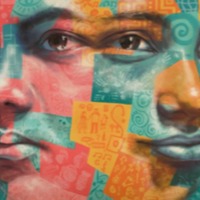
Shin Dong Hyuk (Narrative 2)
The Global Slavery Index 2018 estimates that there are 2,640,000 people living in conditions of modern slavery in The Democratic People’s Republic of Korea (North Korea). Men, women and children are subjected to forced labour and sex trafficking. Government oppression in the DPRK prompts many North Koreans to flee the country in ways that make them vulnerable to human trafficking in destination countries. Many of the estimated 10 000 North Korean women and girls who have migrated illegally to China to flee abuse and human rights violation are particularly vulnerable to trafficking. Some lure, drug, detain or kidnap North Korean women on their arrival, others offer jobs but subsequently force the women into prostitution, domestic service, or forced marriage. If found, Chinese authorities often repatriate victims back to the DPRK where they are subjected to harsh punishment including forced labour in labour camps or death. Shin Dong Hyuk was born in a North Korean prison labour camp in 1982. He tells of his experience growing up in the camp and being forced to work from a very young age. In the camp, food was restricted and beatings were common, by both prison officers and Shin Dong’s own mother. When he was fourteen, Shin Dong’s mother and brother attempted to escape the camp. He was forced to watch their execution and tortured himself for presumped involvement in their escape. In late 2004 Shin Dong was partnered with a man who had seen the outside world and they began to plan their own escape. In January 2005, they escaped while collecting firewood, however Shin Dong was the only one to succeed.
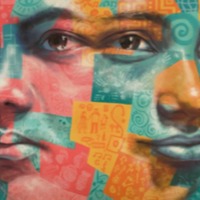
Shin Don Hyuk
The Global Slavery Index 2018 estimates that there are 2,640,000 people living in conditions of modern slavery in The Democratic People’s Republic of Korea (North Korea). Men, women and children are subjected to forced labour and sex trafficking. Government oppression in the DPRK prompts many North Koreans to flee the country in ways that make them vulnerable to human trafficking in destination countries. Many of the estimated 10 000 North Korean women and girls who have migrated illegally to China to flee abuse and human rights violation are particularly vulnerable to trafficking. Some lure, drug, detain or kidnap North Korean women on their arrival, others offer jobs but subsequently force the women into prostitution, domestic service, or forced marriage. If found, Chinese authorities often repatriate victims back to the DPRK where they are subjected to harsh punishment including forced labour in labour camps or death. Shin Don Hyuk was born in a political prison camp in North Korea. He recalls being under the constant supervision of armed guards who would tell him and the other children that they must work hard until they die to pay for the crimes of their parents. When he was 14 years old Shin Don Hyuk reported his parent’s plan to escape but instead of being rewarded was locked up and tortured alongside his family. He gives details of the torture he was subjected to and tells of the execution of his mother and brother. Shin Don Hyuk was able to escape and now tells of his experience to raise awareness of conditions in North Korean prison camps in the hopes of liberating the people kept there.

Wendy
There are an estimated 403,000 people living in modern slavery in the United States (GSI 2018). Sex trafficking exists throughout the country. Traffickers use violence, threats, lies, debt bondage and other forms of coercion to compel adults and children to engage in commercial sex acts against their will. The situations that sex trafficking victims face vary, many victims become romantically involved with someone who then forces them into prostitution. Others are lured with false promises of a job, and some are forced to sell sex by members of their own families. Victims of sex trafficking include both foreign nationals and US citizens, with women making up the majority of those trafficked for the purposes of commercial sexual exploitation. In 2015, the most reported venues/industries for sex trafficking included commercial-front brothels, hotel/motel-based trafficking, online advertisements with unknown locations, residential brothels, and street-based sex trafficking. Wendy Barnes was trafficked from the age of 15 across the US West Coast for nearly 15 years, from the mid 1980s until 2000. Her trafficker, Gregory Leon Hightower, was eventually arrested and sentenced to life in prison in Oregon. Wendy now lives in Southern California and works full time as a customer service representative. Her narrative is from an interview with Francine Sporenda for the Révolution Féministe website, originally published in French and then in English by Nordic Model Now!, a UK secular, feminist, grassroots women’s group campaigning for the abolition of prostitution and related practices. Wendy has published a book about her experiences titled And Life Continues: Sex Trafficking and My Journey to Freedom (2015).
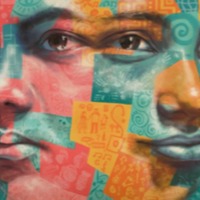
Yonathan Tekle
There is an estimated 48,000 people living in modern slavery in Libya (GSI 2018). Libya is a major transit destination for migrants and refugees hoping to reach Europe by sea. Human trafficking networks have prospered amid lawlessness, created by the warring militias that have been fighting for control of territories since the toppling of Muammar Gaddafi in 2011. Highly organized trafficking and migrants smuggling networks that reach into Libya from Niger, Nigeria, Chad, Eritrea, Ethiopia, Somalia, Sudan, and other sub-Saharan states subject migrants to forced labour and forced prostitution through fraudulent recruitment, confiscation of identity and travel documents, withholding or non-payment of wages, debt bondage, and verbal, physical, and sexual abuse. In some cases, migrants reportedly pay smuggling fees to reach Tripoli, but once they cross the Libyan border they are sometimes abandoned in southern cities or the desert where they are susceptible to severe forms of abuse and human trafficking. For the past five months, Yonathan has been held inside a container illegally in the town of Gharyan, 91km from the capital, Tripoli. Yonathan was a soldier before deserting and fleeing Eritrea in December 2016. He had arranged for Sudanese smugglers to take him to Libya - and the journey became more hazardous and expensive than he had ever imagined. After he crossed the border into Sudan, the smugglers demanded more money than agreed to take him to Khartoum. He had to call home and scramble for money.
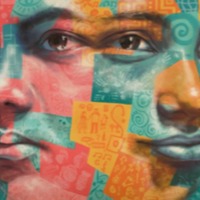
Sami
There is an estimated 48,000 people living in modern slavery in Libya (GSI 2018). Libya is a major transit destination for migrants and refugees hoping to reach Europe by sea. Human trafficking networks have prospered amid lawlessness, created by the warring militias that have been fighting for control of territories since the toppling of Muammar Gaddafi in 2011. Highly organized trafficking and migrants smuggling networks that reach into Libya from Niger, Nigeria, Chad, Eritrea, Ethiopia, Somalia, Sudan, and other sub-Saharan states subject migrants to forced labour and forced prostitution through fraudulent recruitment, confiscation of identity and travel documents, withholding or non-payment of wages, debt bondage, and verbal, physical, and sexual abuse. In some cases, migrants reportedly pay smuggling fees to reach Tripoli, but once they cross the Libyan border they are sometimes abandoned in southern cities or the desert where they are susceptible to severe forms of abuse and human trafficking. Sami left Eritrea when he was 15 years old. He travelled to Ethiopia and from there he made it to Sudan. From Sudan, he was smuggled into Libya via Chad, after paying smugglers $1,500. On the Libyan border, he was caught and told by the Libyans he had been sold by the Chadian smugglers and needed to pay more money.
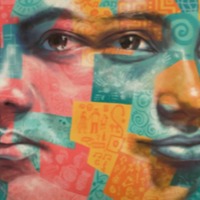
Elias
There are an estimated 451,000 people living in modern slavery in Eritrea (GSI 2018). The small country has a unique system of compulsory, open-ended military service for citizens that makes it one of the most oppressive states in the world. The government has enforced its current policy of sending all secondary school students to serve for a minimum of twelve months since 2003. While Eritrean law puts the minimum conscription age at 18, many teenagers find themselves recruited during high school at age 16 or even younger. In rural areas, where formal education is rarer, the army will visit villages to round up young girls and boys who look roughly of age, to begin their program of combat training and forced labour. Elias was 15 years old when he was imprisoned for attempting to flee Eritrea. He was then sent to a military training camp where he tells of the starvation and beatings he and other children endured. Elias was finally able to escape and leave the country.
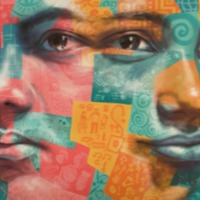
Suliman
There are an estimated 451,000 people living in modern slavery in Eritrea (GSI 2018). The small country has a unique system of compulsory, open-ended military service for citizens that makes it one of the most oppressive states in the world. The government has enforced its current policy of sending all secondary school students to serve for a minimum of twelve months since 2003. While Eritrean law puts the minimum conscription age at 18, many teenagers find themselves recruited during high school at age 16 or even younger. In rural areas, where formal education is rarer, the army will visit villages to round up young girls and boys who look roughly of age, to begin their program of combat training and forced labour. Suliman was 15 when he was caught trying to flee Eritrea and imprisoned. He was subjected to interrogation and torture before he was released and able to leave the country.
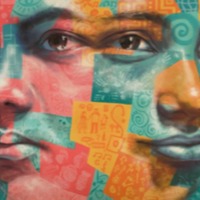
Hyiab
There are an estimated 518,000 people living in modern slavery in Egypt, 465,000 in Sudan and an estimated 451,000 in Eritrea (GSI 2018). Since 2006 tens of thousands of Eritreans fleeing widespread human rights abuses and destitution have ended up in Egypt’s Sinai Peninsula. Until 2010, they passed through Sinai voluntarily and generally without any problems and crossed in to Israel. However, since then, Sudanese traffickers have kidnapped Eritreans in eastern Sudan and sold them to Egyptian traffickers in Sinai who have subjected at least hundreds to violence in order to extort large sums of money from their relatives. Hyiab* paid to be smuggled from Eritrea to Israel, however on the way she was held captive for eleven months, tied up and beaten. She was only able to escape after paying the smuggler’s ransom.
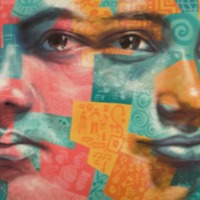
Madihah
There are an estimated 518,000 people living in modern slavery in Egypt, 465,000 in Sudan and an estimated 451,000 in Eritrea (GSI 2018). Since 2006 tens of thousands of Eritreans fleeing widespread human rights abuses and destitution have ended up in Egypt’s Sinai Peninsula. Until 2010, they passed through Sinai voluntarily and generally without any problems and crossed in to Israel. However, since then, Sudanese traffickers have kidnapped Eritreans in eastern Sudan and sold them to Egyptian traffickers in Sinai who have subjected at least hundreds to violence in order to extort large sums of money from their relatives. Madihah* defected from the Eritrean army and was kidnapped by smuggler at the Sudan border and then taken to Sinai. Madihah was subjected to physical and sexual abuse, and forced to work as a cleaner.
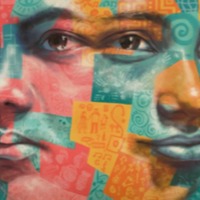
Asmarina
There are an estimated 518,000 people living in modern slavery in Egypt, 465,000 in Sudan and an estimated 451,000 in Eritrea (GSI 2018). Since 2006 tens of thousands of Eritreans fleeing widespread human rights abuses and destitution have ended up in Egypt’s Sinai Peninsula. Until 2010, they passed through Sinai voluntarily and generally without any problems and crossed in to Israel. However, since then, Sudanese traffickers have kidnapped Eritreans in eastern Sudan and sold them to Egyptian traffickers in Sinai who have subjected at least hundreds to violence in order to extort large sums of money from their relatives. Asmarina* was travelling to Israel for work when she was kidnapped by smugglers and held in Sinai for five months, subjected to physical abuse, rape and torture. Asmarina was only released once she had paid the smuggler’s ransom
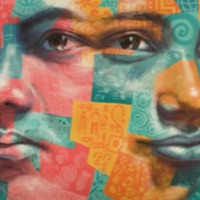
Negassi
There are an estimated 518,000 people living in modern slavery in Egypt, 465,000 in Sudan and an estimated 451,000 in Eritrea (GSI 2018). Since 2006 tens of thousands of Eritreans fleeing widespread human rights abuses and destitution have ended up in Egypt’s Sinai Peninsula. Until 2010, they passed through Sinai voluntarily and generally without any problems and crossed in to Israel. However, since then, Sudanese traffickers have kidnapped Eritreans in eastern Sudan and sold them to Egyptian traffickers in Sinai who have subjected at least hundreds to violence in order to extort large sums of money from their relatives. Negassi* was fleeing Eritrea when he was kidnapped by Smugglers in Sudan and transferred to Sinai. He was subjected to physical abuse and torture for a year until he paid their ransom.
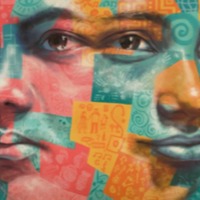
Saare
There are an estimated 518,000 people living in modern slavery in Egypt, 465,000 in Sudan and an estimated 451,000 in Eritrea (GSI 2018). Since 2006 tens of thousands of Eritreans fleeing widespread human rights abuses and destitution have ended up in Egypt’s Sinai Peninsula. Until 2010, they passed through Sinai voluntarily and generally without any problems and crossed in to Israel. However, since then, Sudanese traffickers have kidnapped Eritreans in eastern Sudan and sold them to Egyptian traffickers in Sinai who have subjected at least hundreds to violence in order to extort large sums of money from their relatives. Saare*, a 20-year old Eritrean man said fled Eritrea on November 15, 2011 with a friend. He tells of how Sudanese police handed him and his group over to traffickers who transferred them to Sinai. In Sinai, other traffickers held and abused them and dozens of other Eritreans for almost three months, including by raping women
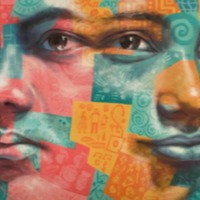
Sheshy
There are an estimated 518,000 people living in modern slavery in Egypt, 465,000 in Sudan and an estimated 451,000 in Eritrea (GSI 2018). Since 2006 tens of thousands of Eritreans fleeing widespread human rights abuses and destitution have ended up in Egypt’s Sinai Peninsula. Until 2010, they passed through Sinai voluntarily and generally without any problems and crossed in to Israel. However, since then, Sudanese traffickers have kidnapped Eritreans in eastern Sudan and sold them to Egyptian traffickers in Sinai who have subjected at least hundreds to violence in order to extort large sums of money from their relatives. Sheshy*, a 17-year-old boy from Eritrea’s capital, Asmara fled to Hafir in Sudan in August 2011 where “Rashaida men” kidnapped and transferred him to traffickers in Sinai who abused him for eight months until his relatives paid $13,000.
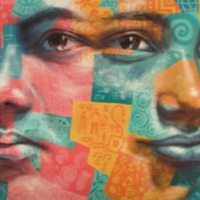
Mo
There are an estimated 136,000 people living on conditions of modern slavery un the United Kingdom (Global Slavery Index 2018). According to the 2017 annual figures provided by the National Crime Agency, 5, 145 potential victims of modern slavery were referred through the National Referral Mechanism in 2017, of whom 2,454 were female, 2688 were male and 3 were transgender, with 41% of all referrals being children at the time of exploitation. People are subjected to slavery in the UK in the form of domestic servitude, labour exploitation, organ harvesting and sexual exploitation, with the largest number of potential victims originating from Albania, China, Vietnam and Nigeria. This data however does not consider the unknown numbers of victims that are not reported. Mo was living in Myanmar (Burma) when he was forced to leave after the persecution of Muslim people. He was staying in a refugee camp with his family which he describes as a ‘prison’. After running away he travelled by lorry to the UK. He was put in to a house and forced to work in a restaurant for little pay and no days off. Mo is now in a safe house, waiting for his passport and papers to be able to work.

Marina
In Russia it is estimated that thousands of women and children are subjected to commercial sexual exploitation and sex trafficking in prostitution and pornography. Women are lured by the promise of lucrative employment and a new location, travelling to the country under the pretence of legitimate employment and a better life. However when they arrive, they are forced into prostitution in brothels, hotels and saunas. There is also evidence of traffickers advertising sexual services of children online. However, despite the evidence of sex trafficking in Russia, it remains an under-recognised area of enslavement in the country. Recently split from her husband and in need of money Marina replied to a newspaper advertisement for a seamstress in Moscow. It was upon meeting her employer that Marina was transported to a house underground along with six other women, and informed that she was now enslaved as a sex worker. Forced to live in unhygienic conditions and required to submit to any clientele request or face physical violence, Marina was only able to escape when she was declared ‘unfit’ to work.

Ika
Men, women and children make up those trafficked in Indonesia, subjected to forced labour and commercial sexual exploitation. Brokers working in rural areas are known to lure men and boys into forced labour on palm oil, rubber and tobacco plantations, while women and under-age girls are lured into work as domestics in private homes and as commercial sex workers. Rising unemployment and slowed job creation has pushed people into the informal sector unprotected by labour laws and thus made them more vulnerable to exploitation. There are currently only 18 shelters in Indonesia working to rescue and rehabilitate traffic victims. Ika dropped out of school at 15 years old and was offered a job in Batam by a new friend. However once she arrived she realised she had been trafficked in to commercial sex work. Ika was subjected to physical beatings by her employer regularly and was ignored by clients when she asked them for help. Eventually, Ika was able to get hold of a phone and message her mother who informed the authorities. A raid was organised and Ika was rescued.
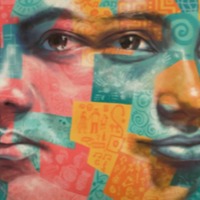
Ying A.
Unknown numbers of people have been held as slave laborers in China’s “Laogai” (labor reform camps). Human rights organizations claim that Falon Gong practitioners are often targeted for arrest, along with ethnic minorities, Catholics, Protestants, and Tibetans. By some estimates around 100,000 Falon Gong practitioners have been sent to the Laogai. Ying was one of these individuals. A student in France, she was imprisoned in 2000 while visiting her family in China.
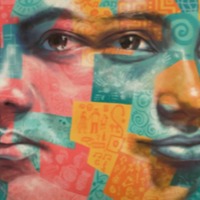
Agor
Thousands of women and children were taken into slavery during the decades of Sudan’s civil war, mainly from Northern Bahr El Ghazal and the Nuba Mountains. Slave-taking was revived in 1985 by the National Islamic government of Sudan primarily as a weapon against counterinsurgents in the South, and secondarily a way to reimburse its surrogate soldiers for neutralizing this threat. In 1989 the government created the Popular Defense Forces (PDF), militia trained to raid villages and take people as slaves. PDF recruits were allowed to keep whoever they captured, along with booty of grain and cattle. One study documents 12,000 abductions by name, while NGOs offer estimates ranging from 15,000 to 200,000. The slaves were often moved to large towns in the north on week-long journeys during which the women were repeatedly raped, and then sold to new masters who used them without pay for farming and sexual services. The peace process brought these PDF abductions to an end, but inter-tribal abductions continue in Southern Sudan. In addition, Sudanese children are used by rebel groups in the ongoing conflict in Darfur; Sudanese boys from the country’s eastern Rashaida tribe continue to be trafficked to the Middle East for use as camel jockeys; the rebel organization “Lord’s Resistance Army” has forcibly conscripted children in Southern Sudan for use as combatants in its war against Uganda; and the institution of chattel slavery continues in southern Darfur and southern Kordofan.Agor was ‘redeemed’ (bought out of slavery) by Christian Solidarity International (CSI), a Zurich-based international human rights organization, in January 2007.